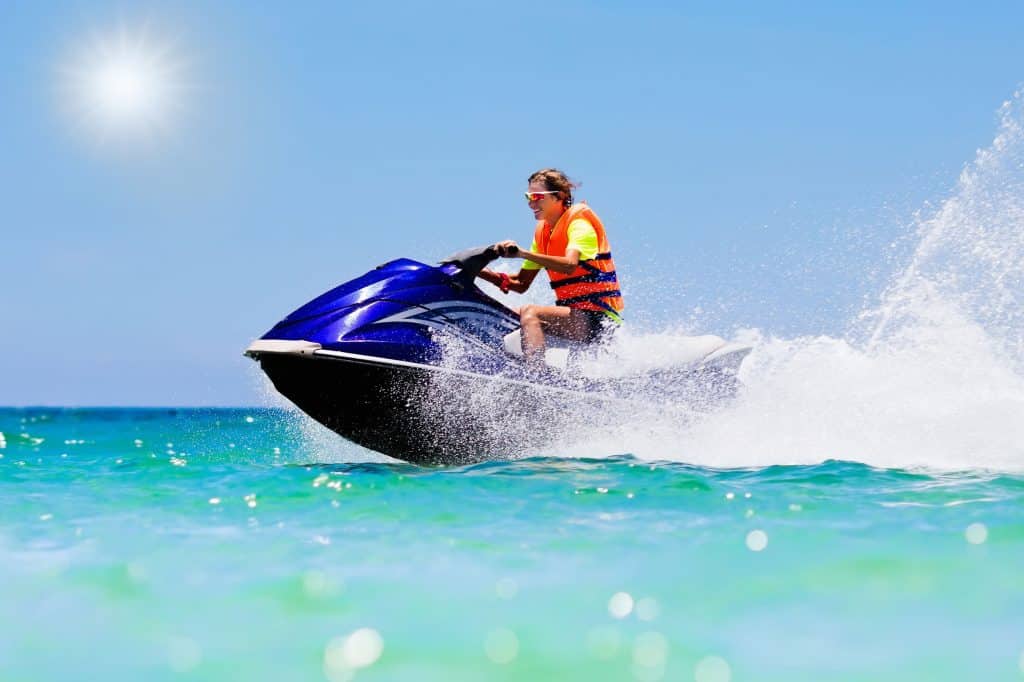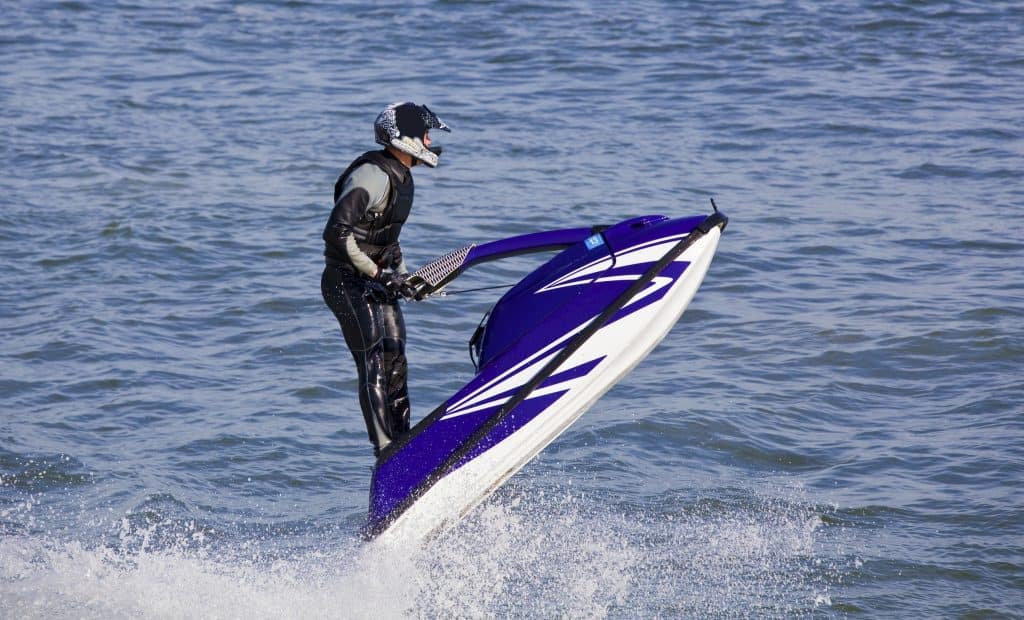
Texas has its own boating rules and legal age for driving a jet ski. All of this information is answered below.
In Texas, a person who is 13 years or older can operate a jet ski alone if they have passed their Texas boater safety education exam and has their education card. A person under 13 years old can operate a jet ski as long as they are supervised by a person who is 18 or older who has their boater safety education card.
A person who is born on or after September 1, 1993 must have a Texas boater safety education card to operate any kind of watercraft.
Steps to Becoming an Operator
Getting your Texas boating safety education card is not a hard thing to do and it will last you your whole life. Here is a list of the 3 simple steps you need to do to get your certificate:
- As long as you are 13 years or older you can start by studying the Texas boating safety manual, or sign up for an online course at boat-ed.com or boaterexam.com.
- Once you feel ready, go take the final Texas boating exam online and pass by getting 80 percent or better.
- Print out your card and get boating! Your permanent boaters card will come in the mail within a few weeks after you pass the test.
You can drive a jet ski as long as you pass the exam and keep the card on board with you. The good thing about a boater safety education card is once you get it, it lasts your entire life, unlike a drivers license. It is not hard to get your boater safety card and if you have one, it can save you money on your PWC insurance.
These days, it is a good idea to get one no matter what age you are so that if you are ever in an accident, you can show you took the education exam and passed it. Knowing the specific rules in your state is vital in preventing accidents on the water.
Understanding Texas’s Boating Rules
- Every person on board the watercraft must have a life jacket that fits them and is US Coast Guard approved. Inflatable life jackets are NOT allowed on jet skis
- There must be a sound-producing device such as a whistle, horn, or bell that can make an efficient sound to signal other vessels
- All vessels must have at least one bright light that is visible to other vessels
- Some of these lights include:
- Sidelight- These are red and green lights that are visible to other vessels approaching from the side or head-on. The red light goes on the watercraft’s left side and the green light goes on the right side
- Sternlight- This is a bright white light that is placed on the back of the watercraft
- Masthead light- This is a white light that shines forward and to both sides of the watercraft
- All-round white light- This combines a masthead light and a stern light into one white light that can be seen from other vessels from any direction. This can serve as an anchor light when the sidelights are extinguished
- If you plan on towing persons behind your PWC on tubes, skis, etc. you will need mirrors that you can use to watch the persons being towed. If you do not have mirrors, then you will need to have a supervisor who is 12 years or older that watches the person/persons being towed the whole time they are on the water. In case of an accident or someone falling off into the water, there needs to be someone watching at all times
- A jet ski needs to have at least one type B-l fire extinguisher on board in case of an emergency
- There needs to be a flame arrestor on board in case of an emergency
- If your jet ski has a cut-off or kill switch, it needs to be attached to a lanyard that is connected to your wrist or your life jacket. This is in case the operator falls off so the engine can kill and stop the jet ski
- The operation of a jet ski at night (between sunset and sunrise) is against the law
- Since jet skis do not have breaks, there are more rules about the distance between other vessels and objects. When coming to a stop, you have to cut the engine a good distance from the shore/dock in order to come to a complete stop at the correct time. It is against the law to operate a PWC within 50 feet of another jet ski, other vessels, persons, object, or shore going more than “idle speed” (5 miles per hour)
- You cannot ride the wake of another jet ski when they are in front of you, and you cannot take risky turns when towing people behind you
- If you are intoxicated while driving a jet ski you will have your boater education safety card suspended and you may be jailed up to 180 days. You could also be fined up to $2,000. The fact is that alcohol was the leading contributing factor of boating deaths and accidents
Regulation Enforcement in Texas

In order to keep the boating laws, you need to have your boater safety education certificate/card on board with you. Law enforcement on the water has the right to ask to see your card at any time, so it is important to have it available when on the water.
If you are found without your boater safety education card and operating a PWC or other vessel, you may be fined and have your privileges taken away.
Boater Safety Certification Requirements for Residents of other States
If you are just visiting Texas and you still want a vacation on the water, you can legally operate a PWC as long as you have your boater safety education certificate/card that you got in your home state.
As long as you are not staying in Texas for more than 2 to 3 months, you do not need to have an actual Texas boater safety card, just the one you received in your home state.
Renting Regulations in Texas
If you are 18 years or older you can rent a jet ski in Texas. You will need to show that you have your boater safety education certificate and a valid identification card.
